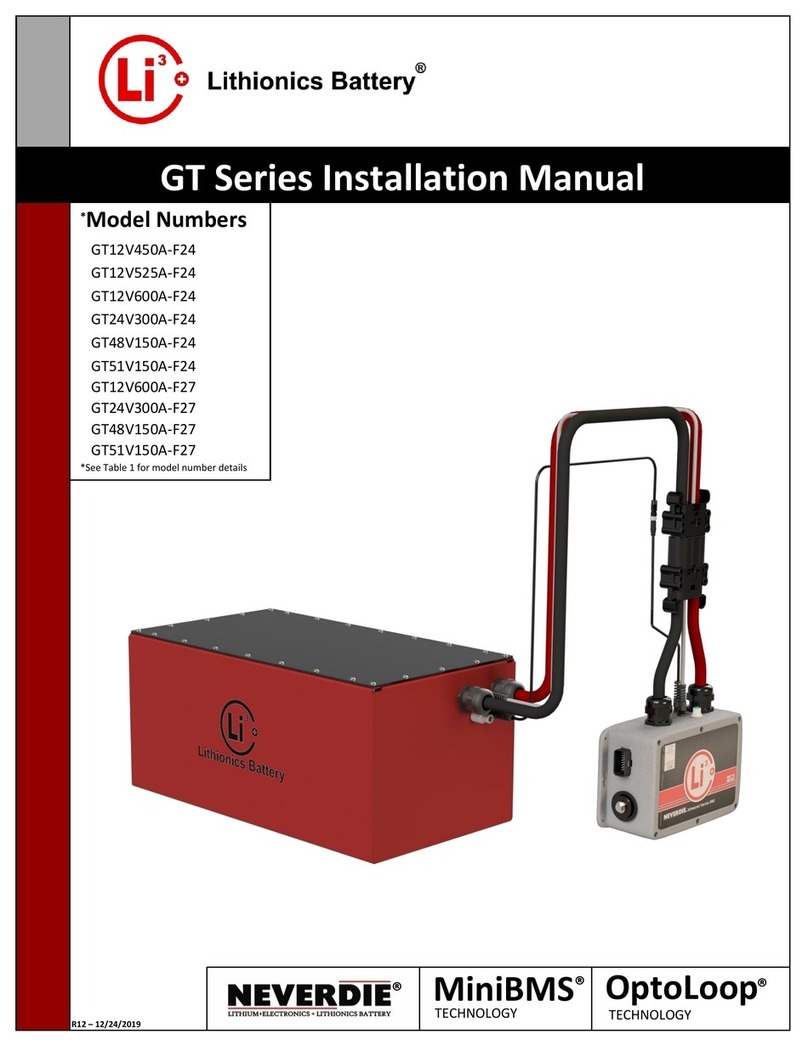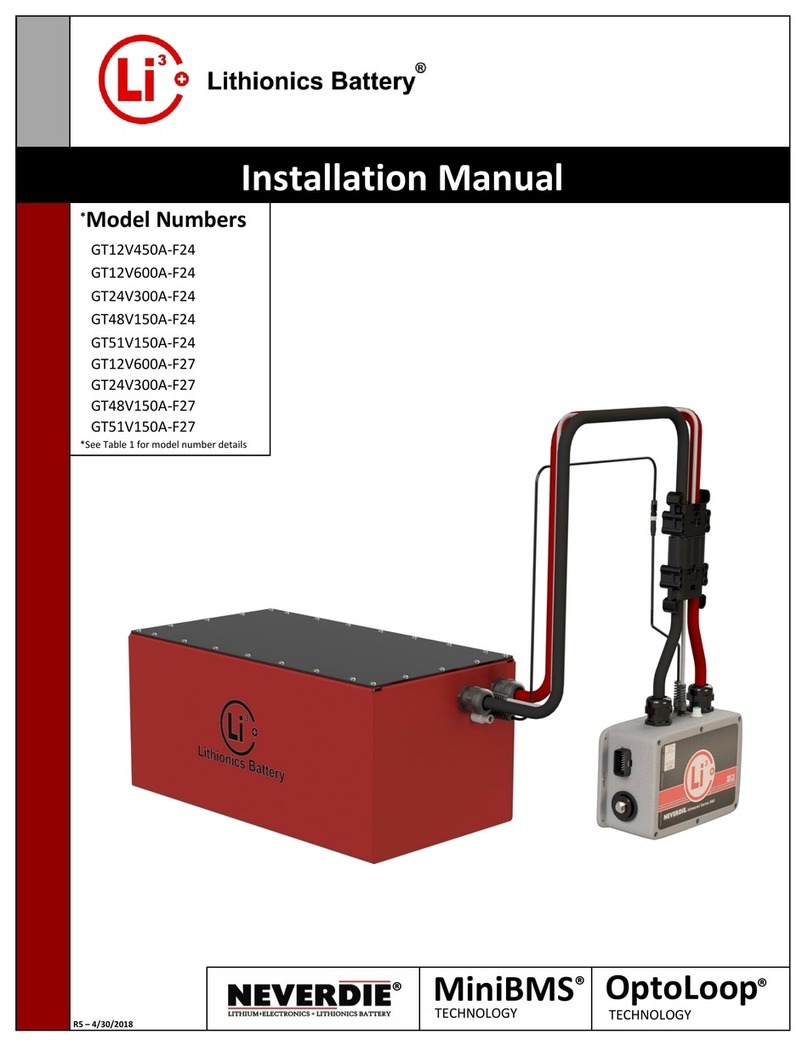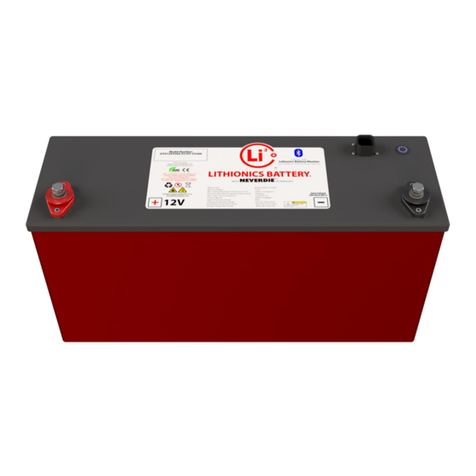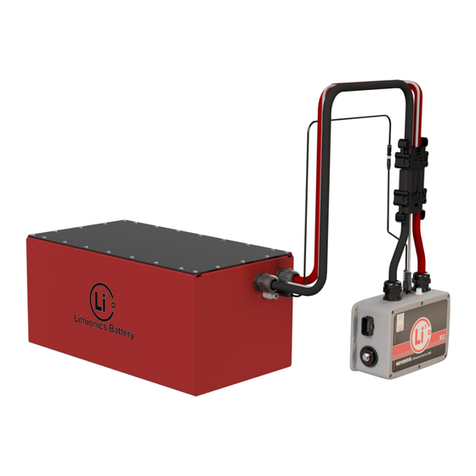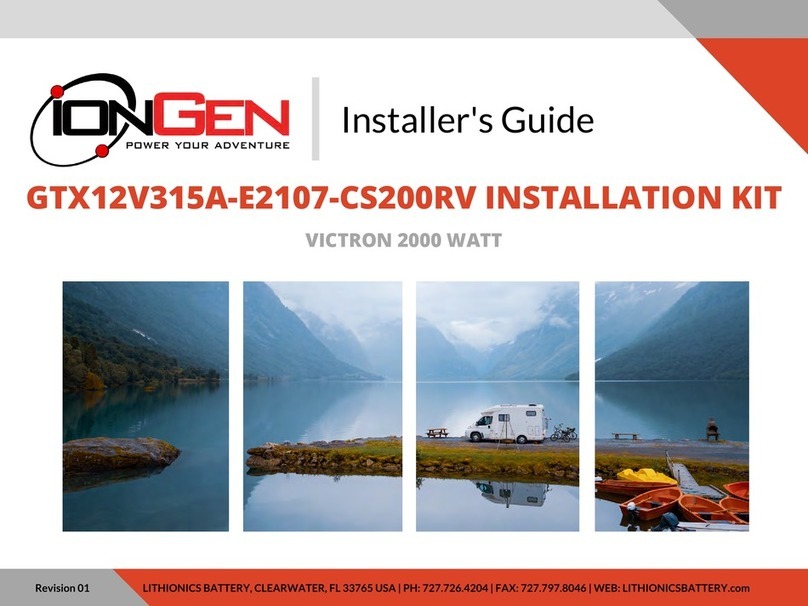
9 GTO Series Installation Manual
2.6 Pressure Vent
•It is recommended to install a ventilation hose onto the pressure vent barb when the Battery Module is in a location
with poor ventilation to atmosphere.
oThe hose shall direct the gases to the atmosphere.
2.7 BMS Unit I/O Connector
•Some systems have a rectangular I/O connector to extend the BMS Unit features remotely such as remote
Power/Reset switch, LED indicator, or serial datalogging. Be sure to connect the I/O connector if so equipped.
2.8 Initial Charge Cycle
•Initially the system must be FULLY charged once to calibrate the BMS Unit to the Battery Module. Please read and
follow the next section to perform this.
3. System Operation
3.1 Powering the System On
•Short-press the Power switch for 1 second.
oThe switch will illuminate once power is enabled.
oYou may notice an audible “thunk” noise of the internal contactor switching on.
oCheck that there is voltage at the Power Terminals with a voltmeter.
3.2 Powering the System Off
•Long-press the Power switch for 3 seconds.
oThe switch will cease to illuminate once power is disabled.
oYou may notice an audible “thunk” noise of the internal contactor switching off.
oCheck that there is 0V at the output terminals with a voltmeter.
3.3 Charging
•The charging device(s) connected to the Lithium Battery System must be programmed as per Table 1.
•Charging may be performed at any time the system is powered On.
oNOTE – The Lithium Battery System will disconnect power if the voltage, amperage, or temperature limits are
exceeded during charging.
oOnly use a Lithionics Battery approved charging source. Please contact Lithionics Battery for charger approval.
3.4 Initial Charging Cycle
•The initial charging cycle is required as it calibrates the NeverDie BMS to the Battery Module(s) for accurate State of
Charge percentage (SoC) monitoring.
•During the initial charging cycle, the system must reach a voltage level that is equal to the Standard Full Charging
Voltage indicated in Table 1.
•Enable the charging device(s) so that they may complete a charge cycle. It is recommended to not have any discharge
loads active during the initial charging cycle, especially towards the end of charging.
3.5 Discharging
•Discharging may be performed at any time the system is powered On.
oNOTE - The Lithium Battery System will disconnect power if the voltage, amperage, or temperature limits are
exceeded during discharging.
•The NeverDie feature allows the system to have a “reserve” amount of energy left in the battery. Once the system is
discharged to 12.0V or 10% State of Charge (SoC), whichever comes first, power will be disabled to leave a “reserve”
amount of energy still left in the battery.
•To enable the remaining reserve energy of the system, short-press the Power switch for 1 second.
oNOTE - Once the reserve range is enabled the battery should be charged as soon as possible.
